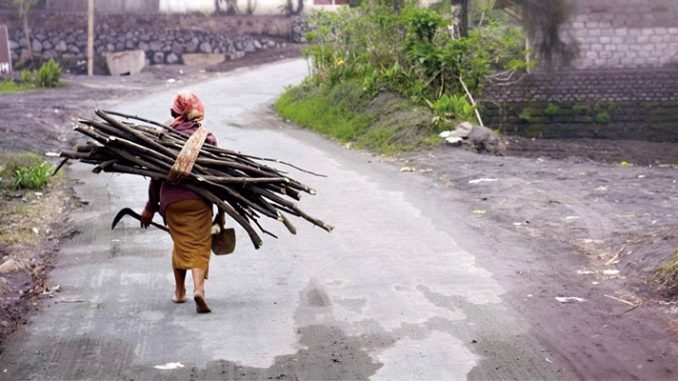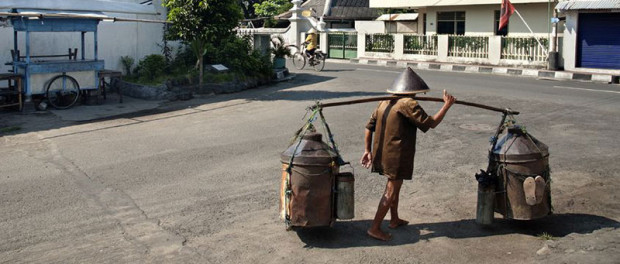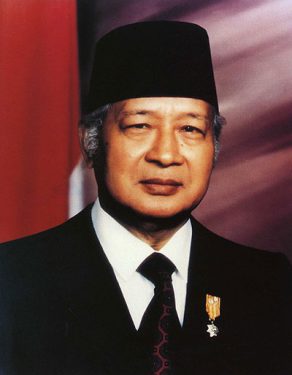
Such hopes have not been realised. Since Indonesia began its democratic transition in 1998, wealth inequality has increased significantly. The deepening social gap is associated, above all, with a dramatic rise in the wealth of the very rich, as well as stagnating income growth among poorer citizens. However, attempts to counter inequality are refracted only diffusely into Indonesia’s political life. Despite deep strains of egalitarianism in Indonesia’s political culture, and despite a plethora of social movements based among poorer citizens, class-based cleavages do not structure the political party system and no systematic program of redistribution has ever been proposed, let alone initiated, by government. Instead, wealthy actors dominate official politics, and the disenfranchised are integrated politically primarily by clientelist linkages, in which politicians offer targeted benefits to voters, rather than society-wide redistribution. However, the politics of redistribution are becoming more salient politically, as evidenced by the growing electoral appeal of politicians expanded health, education and other social welfare policies.

Inequality in Indonesia
Historically, inequality has been somewhat lower in Indonesia than in its major Southeast Asian neighbours. However, official statistics suggest that inequality began to worsen about a decade ago, and at an accelerating pace. The Gini coefficient, which measures income inequality, rose from 0.32 in 2002 to 0.41 in 2013, though most observers believe this measure significantly understates the true extent of inequality in Indonesia. In particular, it fails to capture the extreme concentration of wealth at the top.
Economists and other analysts have debated the causes of this deepening inequality. One factor is stagnation, or at least relatively slow growth, of the income of poorer Indonesians. Thus, one recent study has shown that the poor and near-poor have benefited significantly less from economic growth than average citizens in recent times. 1 While those officially classed as poor fell from 18.4 percent of the population in 2002 to 11.2 percent in 2013, together with the vast army of the so-called “near poor”, they still make up about half of the population. According to the World Bank, 43 percent of the population were living on less than US$2 a day in 2011.
In contrast, though Indonesia’s middle class has certainly expanded significantly, it is at the very top where the most dramatic action has occurred. Over the last decade or so, there has been a massive concentration of wealth among Indonesia’s ultra rich. The American political scientist Jeffrey Winters calculated in 2011 that Indonesia’s richest 43,000 citizens, who represented less than one hundredth of 1 percent of the population, possessed total wealth equivalent to 25 percent of Indonesian GDP, while just forty individuals owned wealth equivalent to a little over 10 percent of GDP. 2 In 2012, the number of Indonesian billionaires passed those in Japan, with the country also having more billionaires per capita than both China and India. 3 In early 2014, Wealthinsight, an institution that provides data on “global high net worth and ultra high net worth individuals”, stated that Indonesia had the fastest rate of growth of millionaires in the world, predicting a rise from 37,000 millionaires in 2013 to over 45,000 in 2014, or a rate of 22.6 per cent. 4 A year earlier, a similar group, Wealth-X, calculated there were 785 “ultra high net worth” individuals (people worth at least US$30 million each) in Indonesia, with a total wealth of US$130 billion, up almost 17 percent on the preceding year. Credit Suisse, not to be outdone, forecasts an increase in Indonesian millionaires from 98,000 in 2014 to 161,000 by 2019, a growth rate of 64 percent. 5 And such estimates presumably miss many of the rich who live overseas: in 2006, Tempo magazine reported that about one third of the millionaires residing in Singapore were Indonesians, many having relocated there after the 1997-98 financial crisis. 6

This growing concentration of wealth is part of a broad global trend, but one factor accelerating it in Indonesia was the commodity boom that occurred during the 2000s, when prices and production of key commodities like coal and palm oil rose sharply. The fact that the benefits of this boom were so concentrated in the upper echelons of Indonesian society, rather than benefitting the poor, points to the importance of political factors in structuring and sustaining Indonesian inequality. Typically, the primary beneficiaries of the commodity boom were entrepreneurs with political connections that allowed them to access the licenses and concessions needed to open and operate mines and plantations. They included major business players in Jakarta, as well as an array of parvenu businesspeople, bureaucrats and politicians in the regions who were able to manipulate the greater leeway given to local governments under decentralisation arrangements to their own advantage. Though fantastically wealthy Indonesians remain concentrated in Jakarta and Singapore, there has also been a major wealth boom in the regions, and it is possible to find evidence of great riches, such as palatial mansions and private jets, when travelling in even relatively remote locations.
The close linkage of private wealth with political power revealed by the commodity boom has in fact long been a characteristic feature of Indonesian political economy, with a large proportion of Indonesia’s richest citizens either coming from political families, or from families who were able to cultivate political patrons and government allies during the Suharto era and beyond. Accordingly, the politics of the Indonesian “oligarchy” have been a major concern of many key analyses of Indonesian politics in the post-Suharto era. 7The basic proposition of the oligarchy thesis is that in the aftermath of the economic and political crisis of the late 1990s, oligarchs “captured” the principal institutions of Indonesian democracy, such as parties and parliaments and also dominate civil society through their control of such institutions as the mass media. Competition for political power, in this view, is basically competition between oligarchs chasing the access to economic resources that state power can deliver. Such competition can be fierce – in Jeffrey Winters’ memorable phrase Indonesia is an “untamed oligarchy”.

Inequality, politics and ideas
Extreme social inequality is, of course, not unique to Indonesia, or to Southeast Asia. Indeed, as the recent well-known work by Thomas Piketty makes clear, it is an enduring feature of developed capitalist countries, and one that has become increasingly pronounced over recent decades. For inequality to persist it requires a supportive ideational context. In most societies this support is achieved by way of two elements which occur in varied mixes and forms. The first is an ideology that legitimates inequality, for instance by claiming that social hierarchy is sanctified by God or some other supernatural force, or by claiming that poor people are personally or collectively responsible for their own conditions and that the wealthy deserve their riches due to talent, hard work, the hereditary principle, tradition, or other factors. A second set of ideas attempts to domesticate inequality and involves promoting state intervention into the economy and social life in order to redistribute wealth or, at least, ameliorate some of the worst effects of inequality. Such ideas are also present in all societies, though they have been particularly associated with attempts to construct welfare states over the last century or so. But although welfare state interventions have at times in some countries significantly reduced inequality, they have never aimed to completely eliminate it.
In Indonesia, what idea structures facilitate inequality? One starting point for our observations here is a national survey conducted in June 2014 by the two polling organisations Lembaga Survei Indonesia and Indikator Politik Indonesia. 8The survey reveals deep social concern about inequality. Although respondents (like citizens of other countries) greatly underestimated the actual extent of inequality in the country, 51.6 percent viewed contemporary Indonesia as somewhat unequal, while 40.1 percent viewed it as highly unequal (only 6.6 percent said Indonesia was somewhat equal and 0.5 percent, very equal). Almost a quarter, 23.3 percent, said that differences in income were unacceptable under all circumstances. Many more – 66.3 percent – said that income differences were conditionally acceptable, but what is interesting is that, of these respondents, only 18 percent chose the justification that points toward social legitimacy: “the rich are rich as a result of hard work, while the poor are poor because they are lazy”. Most of those who said that inequality was conditionally acceptable were domesticators, choosing conditions which implied state action was needed to improve the situation of the poor and so make inequality acceptable: if basic goods were affordable to all (23.6 percent), if poverty was falling (17.5 percent), if the country as a whole was experiencing progress (17.5) and if competition to become wealthy occurred in circumstance of justice (16.3 percent).
These survey findings point to a strong ethos of egalitarianism in Indonesian society, and hostility to the social inequality which so defines it. With its roots in the economic nationalist and socialist themes of the Indonesian anti-colonial struggle, public political discourse remains overwhelmingly statist and welfarist in its orientation. Terms like “liberalism” and even “capitalism” are virtual taboos, even among the established political class, and all major political political parties subscribe to the notion that the state should intervene in the economy to improve the lot of the poor. However, though such sentiment is widespread, it is diffuse. Broad rhetorical commitment to notions of kesejahteraan (welfare) and pemerataan (equality) are rarely accompanied, for example, by talk of increasing the tax burden on wealthy Indonesians in order to enable serious redistribution.

Obstacles and prospects
Much of the explanation for why such broad popular support for equality has failed to translate into stronger efforts to curb inequality lies in the nature of official politics. One factor is the absence of political parties that structurally represent the poor. There is, for example, no social democratic party linked to labour unions. This is not to say that there are no social movements or mobilisation among poorer people – on the contrary, such movements are all but ubiquitous and have in some sectors (such as organised labour) become increasingly assertive over the last decade. But these social movements are fragmented, focusing on piecemeal policy changes and at most making one-off deals over electoral alliances. A related constraint is the predominance of clientelist linkages in connecting citizens with their political representatives: though politicians approach citizens using universalist language of social welfare and equality, what they offer is typically benefits targeted strictly at supporters: a development project in a particular village, a program of social assistance channelled through a supportive religious organisation, individual gifts or payments at election time, and so on. Clientelism of this sort does involve a sort of rough and ready redistribution, but at a low level and on an ad hoc basis. It is also a mode of political practice that favours wealthy actors and thus helps, in the long term, to entrench inequality rather than reduce it.
And yet, despite all such obstacles, the first glimmers of a new paradigm of social welfare and, perhaps, redistribution in Indonesian politics are becoming visible. Over the last decade, especially encouraged by the introduction of direct elections of local government leaders, many local governments have begun to introduce new social welfare policies, especially in the area of healthcare. A new universal healthcare insurance scheme has been introduced at the national level. 9 The new president, Joko Widodo, won election in 2014 by mobilising support among poorer voters, presenting himself as someone uniquely able to understand their needs and offering them expanded healthcare, education and other social services. One of his earliest policies is a program of cash payouts to poor families which will eventually reach one-third of the population, making it, according to The Economist magazine, “the largest such programme in the world.” 10 In short, the population’s egalitarian instincts are slowly being matched by concrete policies. While a direct and fundamental challenge to wealth inequality is certainly not on the cards, at least we see the first faltering steps aimed at domesticating it.
Edward Aspinall
Professor, Department of Political and Social Change, Coral Bell School of Asia Pacific Affairs,
College of Asia and the Pacific, Australian National University.
Issue 17, Kyoto Review of Southeast Asia, March 2015

Notes:
- Arief Anshory Yusuf, Andy Sumner & Irlan Adiyatma Rum (2014) Twenty Years ↩
- Jeffrey Winters, “Who will tame the oligarchs?”, Inside Indonesia, No. 104, 2011. At <http://www.insideindonesia.org/feature-editions/who-will-tame-the-oligarchs> (accessed 13 January 2015). ↩
- Eric Bellman, “Indonesia Home to More Billionaires Than Japan”, Wall Street Journal Blog <http://blogs.wsj.com/searealtime/2012/11/30/indonesia-home-to-more-billionaires-than-japan/> (accessed 30 November 2012). ↩
- “The 2014 Millionaire Explosion”, WealthInsight Press Release, 17 Jan 2014. At <http://www.wealthinsight.com/pressrelease/the-2014-millionaire-explosio-4161554> (accessed 13 January 2015. ↩
- Credit Suisse media release, October 14, 2014, page. 6. At <https://www.credit-suisse.com/upload/news-live/000000022801.pdf> (accessed 13 January 2015). ↩
- Heri Susanto, “New Heaven for Indonesian Millionaires”, Tempo Magazine, No. 08/VII/Oct 24 – 30, 2006. ↩
- For a recent compilation, see Ford, M., Pepinsky, T. (2014). Beyond Oligarchy: Wealth, Power, and Contemporary Indonesian Politics. Ithaca, New York: Cornell Southeast Asia Program. ↩
- Kesenjangan Pendapatan: Harapan Publik Terhadap Pemerintahan Jokowi-Jk Survei Nasional. Jakarta: Lembaga Survei Indonesia and Indikator Politik Indonesia, 2014. ↩
- See Edward Aspinall, 2013. “Popular Agency and Interests in Indonesia’s Democratic Transition and Consolidation”, Indonesia, No. 96 (October), pp. 101-121. ↩
- “Indonesia’s anti-poverty plans: Full of promise”, The Economist, 10 January 2015. At <http://www.economist.com/news/international/21638129-cutting-fuel-subsidies-makes-space-ambitious-income-top-up-scheme-full-promise> (accessed 15 January 2015). ↩
